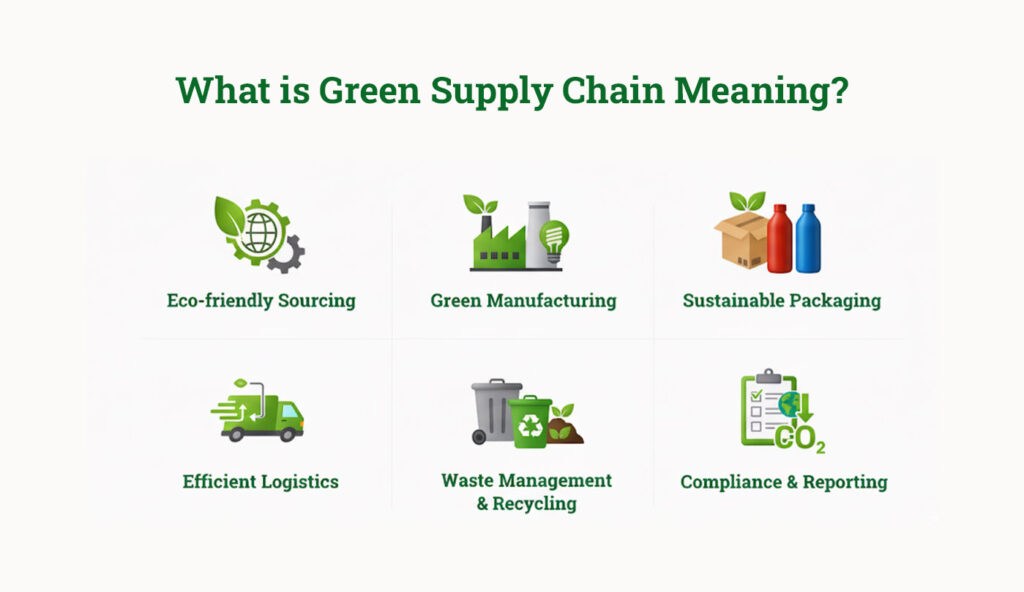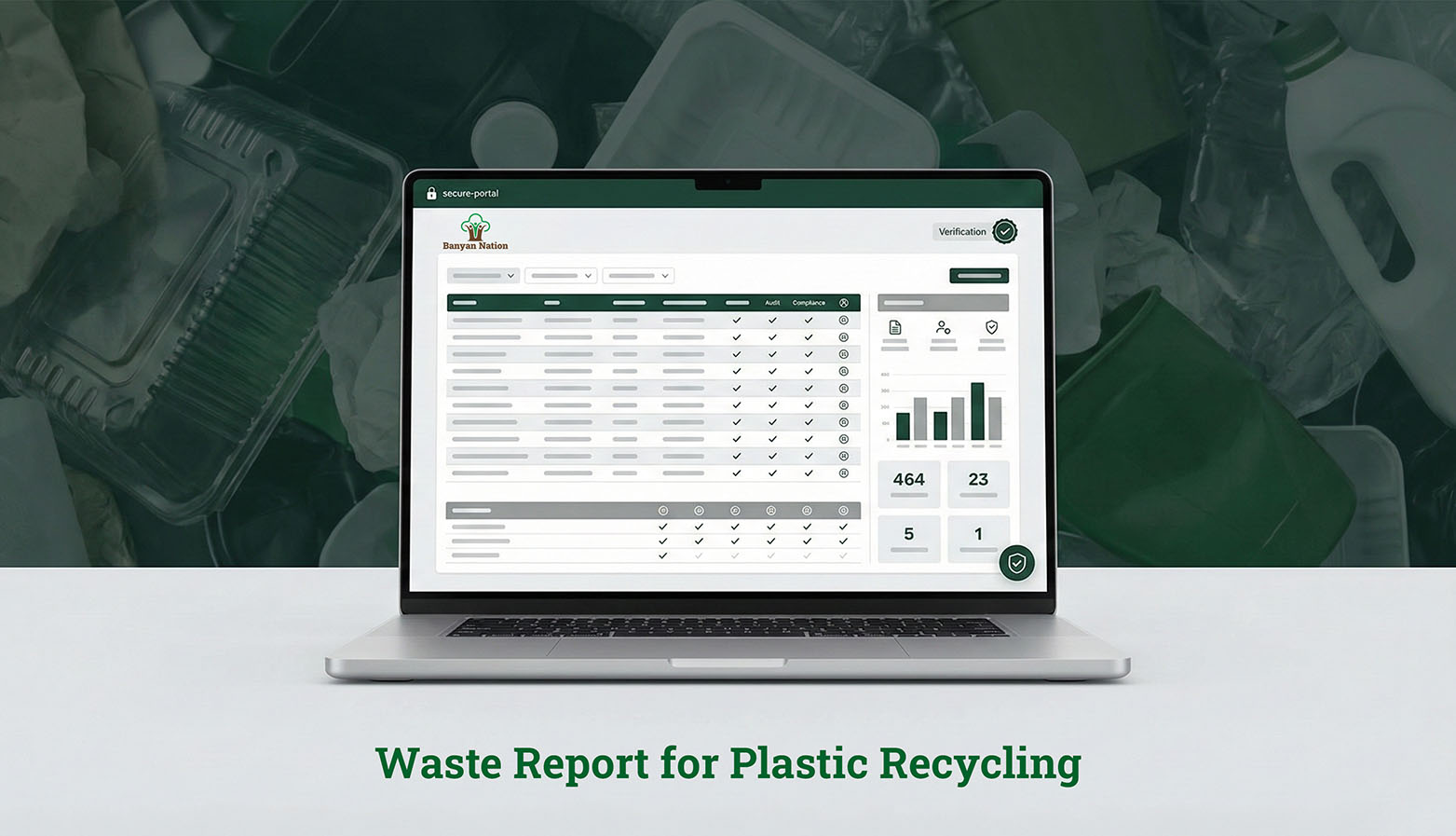The notion of corporate responsibility has grown way beyond the usual profit margins, in the fast-paced business world today. Both consumers, investors and regulatory bodies are seeking more transparency and accountability on the part of businesses, especially as far as their effect on the environment is concerned. To progressive companies, this change is a great opportunity that does not only give them a chance to meet new standards, but also to create and be ahead of the trend. The central issue in this change is the transition towards a green supply chain management system. Through the careful incorporation of the concept of sustainability in all aspects of their operations, including sourcing, production, and logistics, businesses can greatly lower their ecological footprint but, in the process, increase their brand image and ensure their survival in the long run. This is an all-inclusive strategy called green scm, which is no longer a niche strategy but a strategic requirement. It is the key to the better and more resilient, efficient, and environmentally conscious future of companies in India and the whole world as well; the knowledge of the principles of a green supply chain management system is the initial step. It can be a smooth process of aspiration-to-reality through partnering with the right minds, like Banyan Nation.

What is Green Supply Chain Meaning?
In its simplest sense, the meaning of the green supply chain management or green scm is the integration of the environmental concerns in all matters concerning the supply chain. Green scm covers the entire life cycle of a product starting with the design of the product till its end-of-life including sourcing of raw materials, manufacturing, packaging, transportation, distribution, and disposal. Green scm is all about waste reduction, less use of energy and less carbon footprint of a company as a whole. This is aimed at developing a closed-loop solution, where materials should be used again, recycled or made anew, and so the linear model of take-make-dispose will be changed into a circular one. This is how the green supply chain works.
Objectives of Green Supply Chain Management
The essential goals of the green supply chain management system are complex and are oriented towards a triple bottom line: people, planet and profit. They aim to:
- Minimize Environmental Impact: This is the main goal, which aims at reduction of emissions, waste, use of water, and energy.
- Improve the use of recycled materials and processes: A green supply chain can lessen the dependency on the finite virgin resources by encouraging the usage of recycled materials and optimization of processes.
- Enhance Brand Image and Reputation: The consumers and business partners are more likely to attach themselves to a company that is determined to be sustainable.
- Secure Regulatory Compliance: As regulations such as the Extended Producer Responsibility (EPR) emerge, an effective strategy of green supply chain management makes a business comply or even go beyond the law.
- Realize Cost Savings: Green scm can result in considerable long-term savings of costs by cutting down on waste and maximizing energy consumption.
Why is Green Supply Chain Management Important?
In the world that is experiencing an increasing amount of climate and pollution threats, a greener supply chain has ceased being a nice-to-have but a must-have. The advantages are wider than environmental protection to generate competitive advantage. Firms that undertake green supply chain management are in a better position to attract conscious customers, gain ethical investors and create stronger and more robust operations. Choosing a greener supply chain contributes to the reduction of risks related to the shortage of resources and changing costs of energy. It also promotes innovation since the companies are compelled to develop innovative solutions to growing issues. That is why the trend of green SCM is rapidly increasing and it is a definite indicator that a company is eager to create a sustainable profitable future.
Benefits of Green Supply Chain Management
Implementation of green supply chain management practices has a broad scope of advantages that influence financial health and public perception of a company.
- Financial Benefits: Costs of operation will be reduced by cutting waste and energy use and new income will be received by recycled products.
- Reputational Benefits: The company has a stronger brand image, customer loyalty is higher, and people have a better opinion.
- Operation Benefits: Greater efficiency, less supply chain disruptions and it is more resilient to resource shocks.
- Regulatory Advantages: The active adherence to changing environmental standards, which prevents payment of fines and legal problems.
- Competitive Advantage: A differentiated market, which appeals to environmentally conscious partners and consumers.
What are the Factors Affecting Green Supply Chain Management?
There are a number of factors that may affect green supply chain management meaning implementation and success of green supply chain management practices.
- Regulatory Pressure: Government policies and regulations, including those of EPR, can be a significant catalyst of change.
- Consumer Demand: More consumers would be ready to pay a premium on the products that are sustainable and this is pushing the brands to employ a greener supply chain.
- Cost/Financial: An initial cost of switching to a green supply chain management system can also be a roadblock, but the savings and monetary rewards in the long run can overrule this.
- Technological Innovation: The presence of novel technologies to recycle, reduce waste, and generate energy is one of the enablers.
- Supplier and Partner Collaboration: Supplier and partners must be willing to work with the green supply chain management meaning the green scm strategy.
What are some of the Green Practices and Strategies in Supply Chain Management?
There are many approaches that can be adopted to make the supply chain more sustainable. Such green supply chain management examples and practices are usually specific to a company and its industry and products.
- Sustainable Sourcing: Selecting suppliers that offer ethically sourced and environmentally friendly raw materials.
- Green Production: Consuming less energy, reducing waste, and implementing closed-loop technology to recycle water and materials.
- Reverse Logistics: Development of mechanisms to effectively gather used products and wrappings to be recycled or be remanufactured.
- Sustainable Packaging: Recycled materials, recyclable materials or biodegradable materials are used to minimize packaging wastes.
- Effective Transportation: The optimization of routes and cleaner fuels to cut carbon emission of logistics.
Why Choose Banyan Nation as One of the Leading Green Supply Chain Management Companies in India?
As far as the adoption of the strategy of green supply chain management is concerned, the collaboration with the appropriate experts is critical. Banyan Nation is one of the best green supply chain management examples in India. They have a tested model that is a blend of a decade of experience in the recycling of rigid plastic coupled with innovative solutions of flexible plastics, which gives them a competitive edge. They offer a “Clean. Consistent. Compliant.” recycled plastic resin that has been shown to be as good or better than virgin resin, which is the biggest concern of the industry regarding using PCR. Through its collaboration with Banyan Nation, the companies are not merely purchasing the product but joining a completely traceable system, an ethical and a circular system that transforms plastic waste into a resource of value. Such a partnership assists brands in satisfying their EPR requirements and a much greener supply chain.
Conclusion
Green supply chain management is not merely a fad but a revolution that is fundamental in the future of business. The key advantage is that by adopting an integrated approach to green scm the companies would not only be able to preserve the environment but also open up new growth, innovation and profit opportunities. The solution to a really greener supply chain is not exactly simple, but with the correct practices and partnering, it can be fully realized. To those businesses that are willing to be on the forefront of this change, Banyan Nation has the experience, technology and the record of success to make the sustainability objectives a viable competitive edge. This is the new business future; a future where there is complete alignment between purpose and profit.
FAQ's
What are Some of the Green Supply Chain Management Examples?
An example of companies that use green supply chain management is Patagonia, which uses recycled materials and has a repair program to extend the life of its products. Another is Starbucks, which has invested in reusable cup programs and more sustainable sourcing of coffee beans.
Why is green SCM gaining popularity?
Green SCM is gaining popularity due to increased consumer and investor demand for sustainability, stricter environmental regulations like EPR, and the potential for cost savings and brand reputation enhancement.
How Green Supply Chain Management Creates a Circular Economy?
By focusing on practices like reverse logistics, sustainable sourcing, and waste reduction, green supply chain management companies help to close the loop on materials. Instead of being disposed of, products and packaging are brought back into the supply chain for recycling and reuse, creating a circular model.
Making recycled packaging the norm.
CITATIONS:
- World Bank. Product Overview Series: Plastic Credits. Retrieved from worldbank.org
- PandaDoc. What is a Green Supply Chain? Retrieved from pandadoc.com
- Investopedia. Green Supply Chain. Retrieved from investopedia.com


 Why “Design For Recycling” Matters for Companies
Why “Design For Recycling” Matters for Companies Why Soft Plastics Are Problematic & Hard to Recycle
Why Soft Plastics Are Problematic & Hard to Recycle What Is Waste Reporting and Why Does It Matter in Plastic Recycling?
What Is Waste Reporting and Why Does It Matter in Plastic Recycling? What Is Bottle-to-Bottle Recycling? Why It Matters for India
What Is Bottle-to-Bottle Recycling? Why It Matters for India The Role of CSR (Corporate Social Responsibility) in Waste Management
The Role of CSR (Corporate Social Responsibility) in Waste Management

